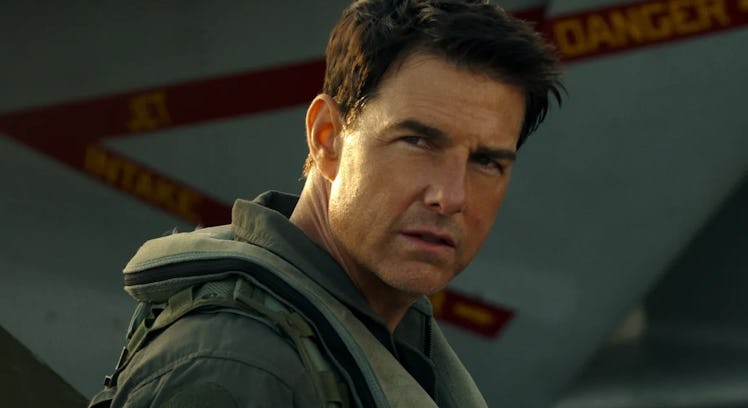Top Gun: Maverick Director Explains Why 36 Years Later, Maverick Basically Didn’t Change
In an exclusive clip, the team behind Top Gun: Maverick explains how they made “a world of nostalgia yet future."

Making a movie sequel can be hit or miss, especially if the original was super popular. So when a Top Gun sequel was announced to be in the works, fans wondered how the movie could match what the first one gave, especially since Tom Cruise was set to reprise his role as Pete "Maverick" Mitchell. Obviously, the movie clicked, but one of the biggest reasons why is that the character of Maverick himself, basically, didn’t change. In a new exclusive behind-the-scenes clip, the writers, producers, and director explain the importance of keeping Maverick as true to his character as possible.
The sequel to the hit 1986 movie has been in the world for a long time, and it was no easy task to make the story work with a 30-year gap for the lead character that people first fell in love with in 1986.
According to an exclusive clip for Fatherly, director Joseph Kosinski details the importance of explaining the journey Maverick experienced in the three-decade timeframe from when we last saw him.
"I started thinking about the idea of Maverick being a test pilot doing top secret projects in the desert," Joseph explained in the clip. "That was an idea I had very early, and Tom loved it."
Producer and writer Christopher McQuarrie echoed this statement saying, "it was very important to us that Maverick still be in the Navy." Adding, "the Navy is really the only thing Maverick has known, and it's like his family."
"It answered the question of how someone would stay in the Navy this long and stay where he is because what matters most to Maverick is he still always finds a way to fly," Christopher continued.
He still needed to be Maverick, but he's older," producer and actor Tom Cruise said. "We are laying in these levels of storytelling in a world of nostalgia yet future."
Top Gun: Maverick is in theaters now and on Digital on August 23rd.
This article was originally published on